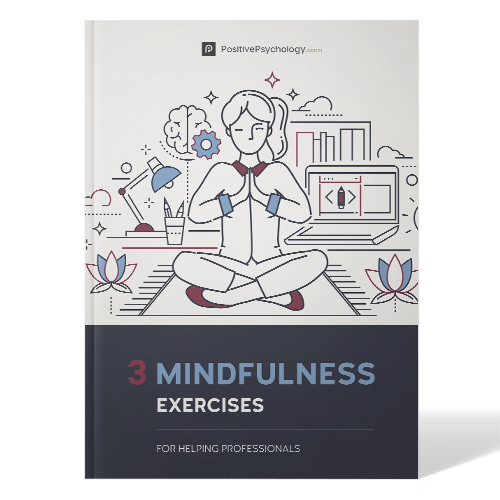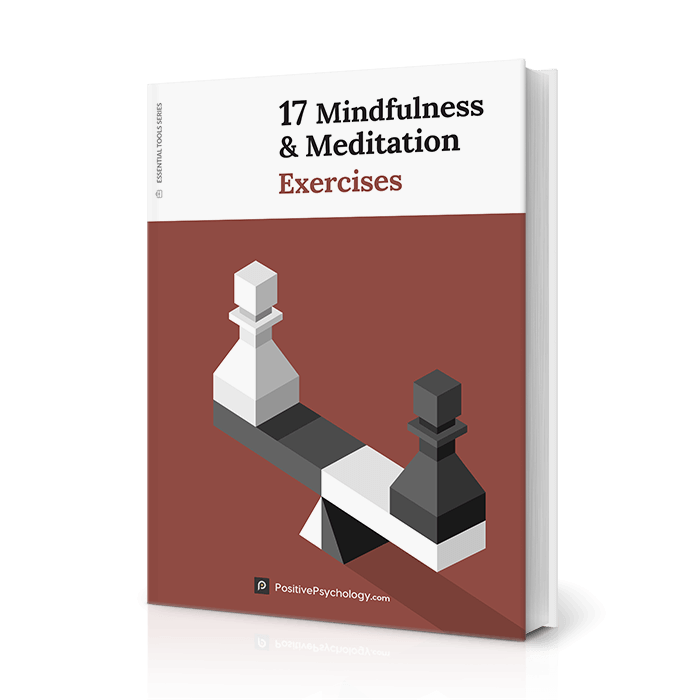Guided Meditation Scripts
If you are looking for a basic introduction to meditation, start with the basic meditation scripts below for an introduction to how to meditate. As you become familiar with meditating and start to develop the skill to focus the mind, you will easily be able to use meditation techniques to make positive changes and to learn new skills (check out the scripts below for learning and growth – for example, learning to play a musical instrument).

Basic Meditation Scripts
Beginner’s Breathing Meditation This breathing meditation script will guide you to relax by focusing on your breathing.
Spiritual Meditation Meditation is effective in reducing blood pressure, decreasing anxiety, improving pain tolerance, raising mood, and counteracting the harmful effects of stress. Spiritual is defined here as whatever gives YOU meaning.
Meditations for Healing
Dealing with Grief This guided relaxation will help to normalize the grief experience and explain the stages of grief.
Active Meditation Exercises
Morning Relaxation: Guided Energy Starter This quick morning relaxation is a guided energy starter that will help you to become wide awake, energetic, and ready for the day ahead. Listen to this audio any time of day to get your energy going.
Martial Arts Training Guided Imagery for Kickboxing or Muay Thai Guided mental rehearsal of various punching and kicking techniques for martial arts training to help prepare for Kickboxing or Muay Thai martial arts competition.
Meditations for Learning and Growth
Meditation for Acting This guided meditation for acting helps you, as an actor, to focus on getting into the character’s state of mind, understand the character you are playing, and act effectively.
Water Meditation: Trusting the People Who Do Medical Procedures Written by Diana. This story is an imagination journey about a main character who helps you relax and overcome fear of medical procedures. Specifically this story is about the fear of needles.
Relaxation for Homework Anxiety Using Relaxation Paint (by Diana) This relaxation for overcoming homework anxiety, written by Diana, uses the example of homework when learning a language, specifically when learning how a language works.
Becoming More Playful This relaxation script begins by guiding you to relax your mind, and then use visualization, meditation, and imagery to get in touch with your inner playfulness.
Overcoming procrastination This relaxation script is for overcoming procrastination by dealing with some of the causes of this behavior and increasing motivation to deal with the things on your to do list.
Relaxation to Deal with Loneliness This relaxation script is to deal with loneliness by increasing confidence, developing a strong sense of self, and getting ready to take action to decrease loneliness.
Meditations for Improved Self Esteem
Affirmations for Self-Esteem This affirmations for self-esteem relaxation script includes affirmations to increase self-esteem and confidence and promote a general feeling of calm.
Dealing with Rejection or Failure Our own self-talk can contribute to the pain and low self-esteem that is sometimes associated with rejection or failure. This relaxation script will help you to identify and change upsetting thoughts.
A Variety of Relaxation Exercises with Meditation Components
Calming Down from Good News This relaxation script is for calming down from good news. It will help you achieve a state of calm so you can focus or sleep as needed.
Relax Under Pressure Learn to relax under pressure with this guided relaxation that will help you to remain calm, focused, and not nervous in a high pressure environment, such as a job interview, presentation, or test.

- All Meditation Courses
- Journey to Well-Being
- Life Navigation Courses
- Journey to Liberation
- Journey to Compassion
- Mind Trainers
- Why Mindworks
- 501c3 Nonprofit
- Get Your Free Meditation Ebook
- Membership & Pricing
- Meditation Course Gift Certificates
- Events & Webinars
Home Blog The Benefits of Practicing Mindfulness of Speech
The Benefits of Practicing Mindfulness of Speech
Category: How to Meditate | Mindfulness and Awareness

The Benefits of Mindful Speech (The Power of Words in Communication)
Buddhist teachings, including the foundational teaching of the Four Noble Truths , remind us that our own personal behavior dictates our experience of the world. Behavior includes what we do, say, and think. Practicing mindfulness of body, speech, and mind helps guide us to act in ways that reduce suffering. Mindfulness of speech is a particularly consequential practice, as speech, sandwiched between body and mind, brings our thoughts to life.
To practice mindful speech is to be aware of what you say out loud and how you say it. We are practicing mindful speaking when we’re present in our conversations, choose our words with care, and maintain an awareness regarding not just what we want to communicate, but how it may be received.
Mindfulness of speech is a means of reducing harm, thus avoiding negative karma . We can also use mindful speech to generate merit by intentionally speaking well of others and sharing words of lovingkindness. Even if we are unsure of concepts like karma and merit , we can understand how purposefully selecting our words is a means of protecting the mind.
When we tell lies or speak in ways that harm or divide others, we find it hard to experience peace. In fact, we’re actively contributing to dis-ease and agitation in the mind. One way to help reduce negative or harmful thoughts is by becoming more selective regarding the thoughts we give voice to. Stop gossiping, for example, and you may find yourself judging others less often.
Speaking mindfully can transform our outer experience as well. When what we say is hurtful or untrustworthy, people stop listening to us. If you feel unheard or ignored, get curious about what you’ve been giving voice to. This includes what we say in conversation with others, but also, the content of our emails, social media posts, and online comments.
Speak honestly, kindly, and meaningfully and you’ll begin to hear more of the same. Your voice will become more beautiful and people will want to listen to you. In this way, mindfulness of speech has the power to change your reality.
Mindful Speaking Exercises
Mindfulness of speech is such an important practice for Buddhists that it has made its way to several top-10 lists. You’ll find mindful speaking practices prescribed in the following teachings:
- The 8-Fold Path
The Buddha prescribed the 8-fold path as a means to the cessation of suffering. Right Speech occupies a spot here alongside Right View, Right Intention, and Right Action. In this case, ‘right’ is defined as wholesome, skillful, and wise.
- The 5 Precepts
Precepts are commitments made as part of taking refuge in the Buddhist path . This foundational code of ethics includes a vow not to lie. Being honest isn’t merely about avoiding bold falsehoods, it includes communicating clearly regarding what you hold to be true.
- The 10 Misdeeds
Avoiding the 10 non-virtuous actions helps us live with greater stability of mind. Four of the ten refer to speaking more skillfully. By speaking honestly, gently, and meaningfully in ways that bring people together, we contribute peaceful and positive energy to the world, for our own benefit and for the benefit of everyone, everywhere.
Practicing points of mindful speech include staying silent as necessary. The old adage to remain quiet if you can’t find anything nice to say is the practice of mindful responsiveness. To improve mindfulness of speech, meditation is helpful. A stable, more spacious mind helps us to slow down and observe what is arising. In the gap between stimulus and response , the most wise and compassionate action may be to bite our to
Share this Post
About the Author: Sara-Mai Conway

Find an Article
Sign up for our newsletter and get our e-book free.
Opt out at any time

Recent Posts

The Lojong Mind Training Slogans

What Should I Do After I Meditate?

Buddhism’s 3 Disciplines of Ethics, Meditation and Wisdom
Popular Categories
- Mind Trainer Articles
- How to Meditate
- Buddhist Path
- Health and Meditation
- Meditation and the Brain
Begin your journey and take our most popular course for free!
Mindworks goal is simple—we want to help you discover the transformative power of meditation so that you can live your best life. As a 501c3 nonprofit, your support enables us to bring accessible, authentic meditation guidance to a worldwide community.
- Live Events and Webinars
Quick-Links
- About Mindworks
- Membership and Pricing
- Privacy Policy
© 2024 Mindworks Inc | All Rights Reserved | 501c3 Nonprofit | Privacy Policy | Terms of Use

- 100 Day Challenge
Meditation Scripts
Mindfulness Worksheets
- How to Teach Mindfulness
- Online Courses
- Audio Meditations
- Meditation 101
- Our Teachers
- BECOME CERTIFIED

- Mindfulness of Speech [Audio]
TRENDING...
Top 3 Meditation Scripts
- Meditation Script for Increased Awareness
- Soft Belly Breathing To Invite In Calm
- A Body Scan Script for Grounding
Top 3 Worksheets
- Loving Kindness Meditation
- Sounds and Silence (Kids)
- Gratitude When You’ve Got Attitude
Top Blog Posts
- Reasons to Use Mindfulness Scripts
- Tips for Teaching Mindfulness Online
- The Power of Loving Kindness
Top Podcast Episodes
- Embodied Awareness of Breath
- Cultivating Self-Compassion
- The 4 Pillars of Well-Being
Top Courses
- Living with Gratitude
- Mindfulness of Eating
- UCLA's Guided Meditations
Top Audio Meditations
- Experiencing Windless Days
- On Knowing Noting and Calm
- The Space Between
- Certification Program
- Guided Meditation Scripts
- Trauma-Sensitive Mindfulness
- 1-on-1 Mentorship
- Audio Talks
Written by:
Updated on:
Mindfulness of Speech is an essential aspect of the spiritual path. Mindfulness techniques can increase ones ability to feel and respond to suffering.
A talk on mindfulness of speech by Donald Rothberg:
This evening is a theme that really continues from last night. And the theme for this evening is speech practice and mindfulness looking at a number of different forms of mindfulness practice that really are part of, or contribute, to our speech practice. And I’ll invite us all, just like I did last night, to listen both internally and externally to stay with yourselves as you also listen. We will repeat this thing from time to time during the retreat, and I will intend to do the same. I will intend to keep inner awareness as I speak.
In fact, one of my mentors when I was starting to do a lot more teaching and giving talks in this context, his guidance for me was this: “Do whatever preparation you do, but when you get to the talk, be in your body, stay in your belly and your heart, and let your thoughts self-organize.” You may try that next time you do public speaking . It’s quite interesting. It’s a practice. So, that really is a practice for me.
And so, I will really try to stay attentive.
So, last night we explored speech practice as an integral part of the path of awakening, and we looked particularly at one form of speech practice related to the ethical principles connected with speech, and these are really the main teachings on speech that we get from the historical Buddha interestingly. And so, what I want to explore tonight, I think, can be read as having been implicit in the teachings of the Buddha that one should be mindful in speech. But a lot of the techniques that we are mentioning, or virtually of what we are all covering, was not reconstructed from text, but is more the creative attempt of contemporaries to layout some of what speech practice looks like in ways that are helpful and skillful. And so, I want to talk particularly about five (5) forms of mindfulness that are central for our speech practice. Several of which, we’ve already began to explore.
So, I want to come back to the theme of connecting inner and outer at the same thing. I want to come back to the theme of the importance of mindfulness of the body for our speech practice. I want to work a little more depth about how we develop mindfulness in relationship to the ethical principles. And, I want, also, to look at the way that we can understand non-violent communication as a form of mindfulness practice. And then, lastly, say a little bit about the importance of mindfulness of thoughts and emotions in our speech practice.
And I’ll actually give a little more attention there, because that’s something we haven’t really covered yet and then we’ll segue with some of our, will do, with the work tomorrow morning. So, that’s my intention. And, I also want to talk generally, some, about the nature of mindfulness.
What is mindfulness ? How do we practice it? What’s its importance really? And, where does it fit in to the larger model of practice?
So, one way that I often like to think about practice, this virtually brings together all the tools—mindfulness, and loving, kindness, and wisdom practice and so forth, is that, one of the ways I’d like to think about the whole idea of practice is as what we might call appropriate response to each moment as it comes. And I’m reminded of this wonderful story which has inspired a lot of people of his teacher who was asked near the end of his life: “What is the meaning of enlightenment?” And you might think that you might get some kind of philosophical answer, or maybe this really complicated metaphysical answer, like enlightenment is understanding the interpenetration of self and other without fixation on objects, and the myths stuff, the overflowing heart connecting with the wisdom mind and— (people laughs). We get trained to do that. So, but the zen teacher didn’t say that.
He didn’t give a conventional answer. He didn’t talk about nirvana, or anything very conventional. He said, what is enlightenment appropriate response? Very down to earth. Understanding of what we’re intending.
Appropriate response becomes clear, that appropriate response is something that we do moment by moment as we live. And one way that I like to think of our practice in a very simple way as appropriate response is to think of it like this—mindfulness tells us what’s happening in the moment. Mindfulness is like our information system that tells us how I’m feeling and what my emotions are, what thoughts are going through, what repetitive patterns of mind that I’m noticing, or can also tell me very simply, I’m very warm. Mindfulness says I know that. On the basis of mindfulness, on the basis of knowing what is occurring, we summon our best wisdom and compassion to decide how should I respond, and that’s the moment of intention.
If you liked this recording and would like to make a direct financial contribution to this teacher, please contact them here: http://www.donaldrothberg.com/contact
*** Material on this site is licensed under a Creative Commons Attribution-Noncommercial-No Derivative Works 3.0 License
Find more exercises related to mindfulness with relationships and family here.
More from: Donald Rothberg
- Dharma Talks
- Upcoming Events
- Newsletter Sign-up
![Donald Rothberg Mindfulness of Speech, Mindfulness of Speech [Audio]](https://mindfulnessexercises.com/wp-content/uploads/2017/10/Donald_Rothberg.jpg)
About the author
Sean Fargo is the Founder of Mindfulness Exercises, a former Buddhist monk of 2 years, a trainer for the mindfulness program born at Google, an Integral Coach from New Ventures West, and an international mindfulness teacher trainer. He can be reached at [email protected]
Try our FREE 100-day Mindfulness Challenge
Receive daily mindfulness meditations, worksheets and infographics to make every day mindful.

Download our 8 Most Popular Guided Meditation Scripts

Session expired
Please log in again. The login page will open in a new tab. After logging in you can close it and return to this page.
Increase People's Calm & Resilience with our Top Guided Meditation Scripts
Guide Meditations with Confidence & Credibility using our FREE scripts:
- Guided Body Scan Meditation
- Awareness of the 5 Senses
- Mindfulness of Breathing
- Increasing Gratitude
- An Anchor for The Wandering Mind
- Grounding w/ Body Awareness
- Focused Attention & Concentration

Increase People's Calm & Resilience with our Top Mindfulness Worksheets
Share Mindfulness with Confidence & Credibility using our FREE worksheets:
- Self-Compassion Break
- Shadow Exercise
- Emotional Awareness
- Loving-Kindness Affirmations
- Three Good Things Exercise
- Witnessing Your Thoughts

Thousands of people have downloaded these 8 Mindfulness Worksheets!
FREE DOWNLOAD...
Get Our 8 Most Popular Mindfulness Worksheets , Right Now, For Free!
Just enter your first name and email address to get INSTANT ACCESS :
100% Secure. We value your privacy.
Mindful Speaking
By Gil Fronsdal
There’s a Buddhist saying that states: “When meditating, watch your mind. When in the world, watch your words.” Being mindful of what we say is as important as being aware of what goes on in the mind. In fact, some aspects of the mind do not reveal themselves until we talk. By becoming aware of what motivates our speaking we can discover aspects of our inner life that may be “off- line” when meditating or when we are alone.
Some people find speaking to be one of the most challenging areas in which to be mindful. The interpersonal concerns, wishes, and feelings that come into play when speaking can be so compelling it is easy to lose ourselves in conversations.
By being attentive while speaking it is possible to grow in self-understanding. One way to do this is to simply ask yourself why you say what you do. What motivations prompt you to speak? What emotions and feelings influence what you say? What are you trying to accomplish in speaking? What are you thinking just before speaking?
Often there is not just one answer to these questions. Continued reflection can reveal how complex and varied the motivations are for what we say. Even something as simple as providing information someone has asked for can have multiple motivations or influences. Most obviously we may want to be helpful. In addition we may wish to make a good impression or, at least, avoid a bad impression of ourselves. We may hope for something in return, even if it is just a bit of appreciation or admiration. We may desire to keep the conversation going or we may be trying to end it. We might speak out of a generous impulse or it may be out of a sense of duty. Because there can be so many simultaneous motivations or concerns operating in even the simplest act of speaking, it is useful to keep inquiring so we can recognize as many intentions as possible.
Being mindful as we speak can reduce tension we may have while speaking. This is especially the case when mindfulness includes “bodyfulness”, i.e., awareness of our body as we speak. When we recognize the physical tensions or strains that build as we speak, we can relax, or at least not continue letting the tension build. We might notice that our physical posture and gestures reinforce psychological tensions as much as express them. The more we are aware of these physical aspects of speaking, the wiser we can be about how we use our body.
The rewards of mindful speaking are great. We are less likely to say things we later regret and more likely to speak wisely and thoughtfully. Remaining mindful while speaking gives us more choice in what we say. By recognizing these choices, speaking can become more deliberate and considered. For those on a path of compassion and liberation it becomes possible to choose. The Buddha provided five criteria for deciding when to speak. These are to speak what is true, kind, useful, timely, and conducive to concord. For the Buddha, all five of these criteria must be met before speaking.
Liberation and compassion depend on being honest. Mindfulness itself is a practice of honest recognition of what is happening. When we speak what is not true we are going “against the grain” of the Buddhist path; we are heading north when we are trying to go south. By speaking only what is true we are also speaking in ways that support the clear seeing that mindfulness fosters. As the saying goes, Lies hide, truth reveals .
Just because something is true doesn’t mean that speaking it is kind. In fact it can sometimes be so unkind that speaking the truth is likened to a stick with which to club people. The greater good for everyone, including the person who speaks, is better attained by speaking with genuine interest in the welfare of others. How we speak has a powerful effect on the way we affect each other. While speaking harshly with hostility may accomplish what we want in the short term, it is counterproductive in the long term. By speaking in ways that are kind, friendly and respectful, we are better able to foster ongoing considerate regard for each other. By speaking with kindness people are also better able to hear the important things we have to say. Or even better, we can aspire to speak so people are uplifted more than depressed by what we say. The saying associated with this is, Kind speech are words from the heart .
Speaking the truth is not always useful or beneficial. It is not useful if whom you are speaking to is unable to hear it or take it into account. It is counterproductive if the person ends the conversation or becomes excessively defensive or offensive. Considering how to speak the truth is an aspect of considering what is useful. Speaking respectfully is helpful, as is being careful with the words we use or the tone of voice in which it is spoken. The saying is, If not beneficial, why say it?
Sometimes it is only useful to speak if the timing is right. By including ‘timeliness’ as one of the criteria for speaking, the Buddha is encouraging us to be mindful of the context of the situation and of the person to whom we are talking. Someone may not be in the mood for the conversation, or they may not have the time or energy to attentively listen. They may be too preoccupied or defensive. Or perhaps it is not useful or kind to speak about some things if third parties are listening. Even though something is true doesn’t mean it is appropriate or helpful for the conversation to be public. It can therefore be useful to wait, sometimes a long time, until the time is right for speaking. The saying is, Only when the time is right does truth take flight .
The final criterion for mindful speech is to consider whether what we are going to say and how we are going to say it is conducive for social concord. Does what we say create more division and separation between others and ourselves or does it support mutual understanding, healthier relationships, and social harmony? Stated more simply, do we speak so it pushes people apart or brings them closer? This last criterion is an encouragement to avoid any rigid separation between self and others, between one’s own group and other groups of people, and between one’s own welfare and the welfare of others. Instead we search for ways to have mutual understanding and mutual support. This is related to the saying, Speak so you become each other’s companion on the journey .
These five criteria are particularly important when we are having difficult conversations. At those times strong mindfulness can help us avoid saying that which makes things worse, not better. Not only can we stay rooted in the present moment so we can track our feelings, thoughts and impulses before we speak, it is also a time to consider if what we are about to say is true, kind, useful, timely, and conducive to concord. If it’s not, then it is time to consider other options for how and when to speak.
Speech is an expression of one’s inner life. Through mindfulness we can better care for the quality, well-being and development of our inner life. Prior to speaking ask: Is it true? Is it kind? Is it useful? Is it timely? Is it conducive to concord?
Recent Posts
- 2024-2025 Eightfold Path Program (In-Person and Zoom)
- Sati Center’s Spiritual Care Programs taught by Gil
- IMC Summer Newsletter
- 6/24-7/15 Introduction to Mindfulness Meditation with Diana Clark
- Wednesday June 19, 6:00 – 7:30pm—Celebrate Liberation and Inclusivity at IMC’s Juneteenth Event
3 Simple Guided Meditation Scripts for Improving Wellbeing

Even the most experienced meditators experience obstacles, such as excessive internal chatter, dozing off, or restlessness, on occasion. All meditators benefit from fresh guidance now and then.
This article describes the differences between guided and silent meditation, introduces three types of guided meditation scripts, and offers tips on how to offer guided meditation online.
Before you continue, we thought you might like to download our three Mindfulness Exercises for free . These science-based, comprehensive exercises will help you cultivate a sense of inner peace throughout your daily life and give you the tools to enhance the mindfulness of your clients, students, or employees.
This Article Contains:
What is guided meditation, how can guided meditation help your clients, 5 best guided meditation scripts, how-to guide for beginners: 5 ideas, a look at loving-kindness meditation, 5 telehealth tips for meditation through zoom, resources from positivepsychology.com, a take-home message.
Guided meditation involves a relationship between a teacher, who guides the meditation using oral instructions, and the student, who is listening to learn meditation (Suzuki, 1970).
Typically, guided meditation is necessary for beginners, but seasoned meditators may also benefit from refreshing their practice by relaxing into a guided session with a beginner’s mind (Suzuki, 1970).
Guided meditation vs silent meditation
Guided meditation can be very useful for keeping meditators on track during meditation.
Guided meditations can include oral instructions about meditation posture, attention to the breath, body scanning techniques , and guided imagery or visualization. They can also include reciting mantras, expressing aspirations aloud, or chanting. They may include specific types of movements or activities conducted in a meditative way.
Meanwhile, silent meditation is generally recommended for seasoned meditators who have internalized previous meditation instructions and can now practice the techniques above without guidance.
Silent meditation can be practiced in groups and alone; guided meditation is always offered in the context of a relationship, even if that relationship is with an app or online audio or video.

Mindfulness meditation has positive effects on health and wellbeing in several areas, including stress management (Davis & Hayes, 2012) and preventing relapse in those with depression and anxiety (Keng et al., 2011).
Other guided meditations such as loving-kindness meditation (LKM) and self-compassion meditation are effective methods of emotional regulation (Feliu-Soler et al., 2017) that can also enhance prosocial feelings (Bankard, 2015) and improve a sense of connectedness (Fredrickson et al., 2008).
LKM is effective at countering harsh inner criticism (Shahar et al., 2015) and high expectations of others (Feliu-Soler et al., 2017). It is also effective for those experiencing PTSD symptoms (Kearney et al., 2013) and loss of meaningful connection, such as the bereaved and those recovering from addictions (Graser & Stangier, 2018; Hofmann et al., 2011).
Guided kindness-based meditations in general, including loving-kindness and compassion meditation , enhance empathy, perspective taking, and self–other discrimination (Mascaro et al., 2015). These skills are crucial for maintaining and developing relationships of all kinds.
How can meditation ease anxiety?
Participants that completed an eight week guided mindfulness meditation course reported a reduction in some anxiety symptoms (Hoge et al., 2013). According to Blum et al. it could be a useful intervention in anxiety in adolescents (2019), and some research shows it can ease anxiety symptoms associated with depression (Edenfield & Saeed, 2012; Hofmann et al., 2010; Takahashi et al., 2019).
It can also alleviate the anxiety caused by stress (Corliss, 2014; Goyal et al., 2014; Ratanasiripong et al., 2015; Zeidan et al., 2014).
Below is a short 10-minute mindfulness meditation for anxiety that you can offer your clients. Additional short scripts are offered in the script section.
Other forms of guided meditation can soothe anxiety and provide a sense of containment by using mantras, visualization, and sound (Chen et al., 2012). For example, transcendental meditation (TM) uses Sanskrit mantra recitation, and a large body of research has documented TM’s success in alleviating mild-to-moderate anxiety (Orme-Johnson & Barnes, 2014).
Below is a 15-minute guided mantra-based meditation for anxiety by Deepak Chopra.
Can it induce relaxation and sleep?
Studies show that practising guided mindfulness meditation for eight weeks helped some participants relax and find relief from insomnia and other sleeping disorders (Neuendorf et al., 2015; Ong et al., 2014; Rusch et al., 2019), especially in older people (Perini et al., 2021).
Try this guided mindfulness meditation for relaxation and sleep offered by Mindful Peace.
Is guided meditation helpful for kids?
A recent systematic review of research conducted on the effects of guided mindfulness and affect-based meditations found that both types of guided meditation benefited kids (Filipe et al., 2021).
Mindfulness meditation improved cognitive and socio-emotional outcomes, whereas affect-based guided meditations like LKM improved social–emotional skills, including kindness, self-care, and perspective taking. Neither type of guided meditation impacted children’s academic outcomes.
You can read more about mindfulness for kids in our related article. Try playing this New Horizons 10-minute guided mindfulness meditation to your kids to see the results.
To share the benefits of guided meditation with your clients, try one of these meditation scripts in the links below.
1. Mindfulness of breathing meditations
Mindfulness meditation has a vast evidence base demonstrating its health benefits according to a recent meta-analysis of 55 years of research (Baminiwatta & Solangaarachchi, 2021).
Breath Awareness
Download our short, guided six-step mindfulness of the breath meditation.
Three Steps to Deep Breathing
Download our Three Steps to Deep Breathing meditation script.
Yogic Breathing
Access our Yogic Breathing mindfulness meditation script here.
2. Loving-kindness meditation
Below is a short script devised to deliver loving-kindness meditation in person and online. We suggest taking a three-second pause between each line if you use it with a client in a session. For an idea of pacing, play this guided 10-minute LKM video by Declutter the Mind.
Posture instructions:
Before beginning the practice, please find a comfortable posture that will help keep your spine straight, either seated or lying down, wherever is comfortable.
Next, notice where you place your hands. If seated, support them in your lap or by placing them gently palms down on your knees. If lying down, place them by your side in the yoga corpse pose .
Now, breathe naturally as we shall begin the meditation.
[bell/gong]
Practice script:
Imagine a dearly loved person sitting opposite you and that a white light connects you heart to heart. Connect with the feelings of affection and warmth you have for them.
Enjoy the feelings as they fill your body.
Next, slowly focus on the phrase, ‘May I be well, happy, and peaceful,’ feeling the warmth of loving-kindness filling your body…
And send these feelings to your friend. ‘May you be well, happy, and peaceful…’
Breathing naturally… As the light connects you, heart to heart.
‘May I be well, happy and peaceful…’
‘May you be well, happy, and peaceful…’
Feel yourselves bathed in the warmth and light of loving-kindness… while repeating these phrases, silently… ( mentally recite for two minutes).
Remember to breathe naturally, as the white light connects you both, heart to heart, and continue. ‘May I be well, happy, and peaceful… May you be well, happy, and peaceful…’
Next, remembering to breathe naturally, imagine the white light between you becoming a circle of light around you both.
The light is bathing you in the warmth and peace of loving-kindness that you radiate out to your surroundings…
Including all beings, from the smallest insect to the largest animal… and out into the universe.
See yourself and your friend radiating the light of loving-kindness out into infinity… ‘May we be well, happy, and peaceful. May all beings be well, happy, and peaceful…’
Breathing naturally, repeat these phrases, silently. ‘May we be well, happy. and peaceful… May all beings be well, happy, and peaceful…’ (mentally recite this for two minutes).
Now, enjoy the feelings of warmth and expansion in your body… Recognize the feelings that flow from your heart out into the universe… and the universal friendliness reflected in your own heart…
‘May we be well, happy, and peaceful. May all beings be well, happy, and peaceful…’ (mentally recite this for one minute).
As you continue to bathe in the warmth of loving-kindness… turn your attention to your body and notice your feelings and sensations… Notice ‘what’ is observing your body… and recognize that awareness… a peaceful, still part of you, that witnesses everything, without judgment…
Breathe naturally…
And slowly open your eyes.
3. Compassion meditation
This is a script devised for in-person and online delivery, starting with the same posture guidelines as the above LKM. In addition, it uses the same template based on the four Buddhist Brahma Viharas , which consist of loving-kindness, compassion, appreciative joy, and equanimity .
For an idea of how to pace this guided meditation, watch this 10-minute Growing Compassion Meditation by Dr. Elisha Goldstein.
Breathing naturally… Imagine a dear friend or loved one you know to be suffering right now, perhaps a sick family member or a friend with problems, and imagine a light at your heart that connects with the heart of your friend.
Breathing naturally, as the white light connects you, heart to heart, send compassion to them, saying, ‘May you be free of suffering and its causes…’
Feel yourselves bathed in the gentle light of compassion… while repeating these phrases, silently…
‘May I be free of suffering and its causes. May you be free of suffering and its causes…’ (recite mentally for two minutes)
Remember to breathe naturally, as the white light connects you both, heart to heart, and continue.
‘May I be free of suffering and its causes. May you be free of suffering and its causes…’
Next, remembering to breathe naturally, see the white light connecting your hearts becoming a circle of light around you both.
The light is bathing you in the gentle light of compassion that you radiate out to your surroundings…
See yourself and your friend radiating the light of compassion out into infinity… ‘May we be free of suffering and its causes. May all beings be free of suffering and its causes…’
Breathing naturally, repeat these phrases, silently. ‘May we be free of suffering and its causes. May all beings be free of suffering and its causes…’ (mentally recite this for two minutes).
Now, enjoy the soft gentle glow in your body… See compassion flowing from your heart out into the universe… and compassion reflected in your own heart…
‘May we be free of suffering and its causes. May all beings be free of suffering and its causes…’ (recite mentally for one minute).
As you continue to bathe in the soft glow of compassion… turn your attention to your body and notice your feelings and sensations… Notice the part of you that is observing your body… and recognize that awareness… a peaceful, still part of you, that witnesses everything, without judgment…

- Familiarize yourself with meditation postures (Shah, 2020), typically lying down or sitting. It is important to keep the spine straight, the hands supported, and the body relaxed.
- Ensure you know the practice yourself well before guiding others. Your degree of familiarity with the practice will be conveyed by the quiet confidence of your guidance.
- Pace your guidance properly. Ensure your delivery gives your client enough time to digest and practice your instructions as they unfold without too much repetition or silence, as both can lead to drowsiness or restlessness depending on a client’s temperament. Open and close your meditation session after checking posture with a soft bell or gong.
- Keep your tone of voice calm and measured. Some people are naturally endowed with a soothing voice, others can practice by recording themselves first.
- Consider recording your guided meditation and practicing with your client together. This will give you more control initially and help you build confidence to guide your clients in person in the future. You can also share your client’s experience more directly if you practice together.

Download 3 Free Mindfulness Exercises (PDF)
These detailed, science-based exercises will help you or your clients enjoy the benefits of mindfulness and create positive shifts in their mental, physical, and emotional health.

Download 3 Free Mindfulness Tools Pack (PDF)
By filling out your name and email address below.
LKM has roots in the ancient Buddhist practice of the Brahma Viharas (Frondsal, n.d.), also called the four immeasurables. Loving-kindness is the English translation of the Pali term metta, the first of the four practices.
The Buddha is said to have taught metta to the monks who were afraid of sprites (malevolent spirits) when meditating in the forest (Trafford, 2020). Their fear undermined their ability to concentrate and practice.
The Buddha taught that the cultivation of metta attracted the outward protection of the devas, or benevolent divinities (Access to Insight, 2013), who repel negative spirits that disturb and distract the mind, protecting an inward practice.
LKM has since developed into a popular guided meditation practice and become the subject of a growing body of scientific research. Some findings have supported the Buddha’s original claims about the power of metta to positively transform a meditator’s perceptions of reality (Vieten et al., 2018).
For further information on recent research and clinical applications, take a look at our dedicated Loving-Kindness Meditation article.

- Ensure you can be fully viewed guiding and modeling a suitable meditation posture, rather than head and shoulders only. Try out the best position using your web camera or phone and the recording facility beforehand.
- Ensure your surroundings are calm, well lit, and free of visual distractions. Wear appropriate clothing for meditation and yoga practice that is loose, roomy, and plain to prevent distractions.
- Wear a Bluetooth wireless microphone clipped to your collar so that you can move freely without losing audio contact. Always ensure that you can be seen and heard properly before you begin.
- After checking on posture, begin and end your guided meditation using a traditional bell or gong.
- Ask for feedback about your videoconference session for ideas on how to improve the experience.

Top 17 Exercises for Mindfulness & Meditation
Use these 17 Mindfulness & Meditation Exercises [PDF] to help others build life-changing habits and enhance their wellbeing with the physical and psychological benefits of mindfulness.
Created by Experts. 100% Science-based.
Our site has many resources on mindfulness meditation based on the latest scientific research in the field, including this collection of 17 Mindfulness & Meditation Exercises for professionals.
Containing the highest rated tools taken from the Positive Psychology Toolkit© , the tools are rooted in science, drawn from the latest research and insights from the field of positive psychology, and include references, practical advice, and detailed descriptions of how to use them.
Interesting examples include the Cooking Mindfully exercise, which helps your clients develop mindfulness and savoring skills with cooking, eating, and beyond, as well as a selection of helpful audio scripts.
Another highly recommended resource is the Mindfulness X © bundle. It offers a complete eight-session training program in mindfulness-based interventions that include meditations and simple awareness exercises. It is the go-to tool if you are dedicated to improving the mindfulness of others.
Guided meditations of all kinds are rooted in ancient contemplative practices of increasing interest to researchers in the fields of medicine, psychology, and neuroscience.
Guided meditation includes a range of approaches, such as mindfulness, affect-based meditations like LKM, and mantra-based meditation like TM.
Short, guided meditations can provide useful support to clients between therapy and counseling sessions by helping them to manage stress, anxiety, sleeping problems, and difficult emotions.
We hope you enjoyed reading this article. Don’t forget to download our three Mindfulness Exercises for free .
- Access to Insight. (2013, November 2) Karaniya Metta Sutta: The Buddha’s words on loving-kindness (Sn. 1.8) . Translated from the Pali by The Amaravati Sangha. Retrieved January 4, 2022, from http://www.accesstoinsight.org/tipitaka/kn/snp/snp.1.08.amar.html
- Baminiwatta, A., & Solangaarachchi, I. (2021). Trends and developments in mindfulness research over 55 years: A bibliometric analysis of publications indexed in Web of Science. Mindfulness 12 , 2099–2116.
- Bankard, J. (2015). Training emotion cultivates morality: How loving-kindness meditation hones compassion and increases prosocial behavior. Journal of Religion and Health 54 (6), 2324–2343.
- Blum, H., Rutt, C., Nash, C., Joyce, V., & Buonopane, R. (2019). Mindfulness meditation and anxiety in adolescents on an inpatient psychiatric unit. Journal of Health Care Chaplaincy , 27 (2), 65–83.
- Chen, K. W., Berger, C. C., Manheimer, E., Forde, D., Magidson, J., Dachman, L., & Lejuez, C. W. (2012). Meditative therapies for reducing anxiety: A systematic review and meta-analysis of randomized controlled trials. Depression and Anxiety, 29 (7), 545–562.
- Corliss, J. (2014, January 8). Mindfulness meditation may ease anxiety, mental stress . Harvard Health Blog, Harvard Health Publishing. Retrieved January 4, 2022, from https://www.health.harvard.edu/blog/mindfulness-meditation-may-ease-anxiety-mental-stress-201401086967
- Davis, D. M., & Hayes, J. A. (2012). What are the benefits of mindfulness? Monitor on Psychology , 43 (7), 64.
- Edenfield T. M., & Saeed, S. A., (2012). An update on mindfulness meditation as a self-help treatment for anxiety and depression. Psychology Research and Behavior Management , 5 , 131–141.
- Feliu-Soler, A., Pascual, J. C., Elices, M., Martín-Blanco, A., Carmona, C., Cebolla, A., Simón, V., & Soler, J. (2017). Fostering self-compassion and loving-kindness in patients with borderline personality disorder: A randomized pilot study. Clinical Psychology and Psychotherapy , 24 , 278–286.
- Filipe, M. G., Magalhães, S., Veloso, A. S., Costa, A. F., Ribeiro, L., Araújo, P., Castro, S. L., & Limpo, T. (2021). Exploring the effects of meditation techniques used by mindfulness-based programs on the cognitive, social-emotional, and academic skills of children: A systematic review. Frontiers in Psychology , 12 .
- Fredrickson, B. L., Cohn, M. A., Coffey, K. A., Pek, J., & Finkel, S. M. (2008). Open hearts build lives: Positive emotions, induced through loving-kindness meditation, build consequential personal resources. Journal of Personality and Social Psychology , 95 (5), 1045–1062.
- Frondsal, G. (n.d.). The four faces of love: The Brahma Viharas. Insight Meditation Center. Retrieved January 3, 2022, from https://www.insightmeditationcenter.org/books-articles/the-four-faces-of-love-the-brahma-viharas/
- Goyal, M., Singh, S., Sibinga, E. M., Gould, N. F., Rowland-Seymour, A., Sharma, R., Berger, Z., Sleicher, D., Maron, D. D., Shihab, H. M., Ranasinghe, P. D., Linn, S., Saha, S., Bass, E. B., & Haythornthwaite, J. A. (2014). Meditation programs for psychological stress and well-being: A systematic review and meta-analysis. JAMA Internal Medicine , 174 (3), 357–368.
- Graser, J., & Stangier, U. (2018). Compassion and loving-kindness meditation: An overview and prospects for the application in clinical samples. Harvard Review of Psychiatry , 26 (4), 201–215.
- Hofmann, S. G., Sawyer, A. T., Witt A. A., & Oh, D. (2010). The effect of mindfulness-based therapy on anxiety and depression: A meta-analytic review. Journal of Consulting and Clinical Psychology , 78 (2), 169–183.
- Hofmann, S. G., Grossman, P., & Hinton, D. E. (2011). Loving-kindness and compassion meditation: Potential for psychological interventions, Clinical Psychology Review , 31 (7), 1126–1132.
- Hoge, E. A., Bui, E., Marques, L. Metcalf, C. A., Morris, L. K., Robinaugh, D. J., Worthington, J. J., Pollack, M. H., & Simon, N. M. (2013). Randomized controlled trial of mindfulness meditation for generalized anxiety disorder: Effects on anxiety and stress reactivity. Journal of Clinical Psychiatry , 74 (8),786–792.
- Kearney, D. J., Malte, C. A., McManus, C., Martinez, M. E., Felleman, B., & Simpson, T. L. (2013). Loving-kindness meditation for posttraumatic stress disorder: A pilot study. Journal of Traumatic Stress , 26 , 426–434.
- Keng, S. L., Smoski, M. J., & Robins, C. J. (2011). Effects of mindfulness on psychological health: A review of empirical studies. Clinical Psychology Review , 31 (6), 1041–1056.
- Mascaro, J. S., Darcher, A., Negi, L. T., & Raison, C. L. (2015). The neural mediators of kindness-based meditation: A theoretical model. Frontiers in Psychology 12 (6), 109.
- Neuendorf, R., Wahbeh, H., Chamine, I., Yu, J., Hutchison, K., & Oken, B. S. (2015). The effects of mind-body interventions on sleep quality: A systematic review. Evidence-Based Complementary and Alternative Medicine , 902708.
- Ong, J. C., Manber, R., Segal, Z., Xia, Y., Shapiro, S., & Wyatt, J. K. (2014). A randomized controlled trial of mindfulness meditation for chronic insomnia, Sleep , 37 (9), 1553–1563.
- Orme-Johnson, D. W., & Barnes, V. A. (2014). Effects of the transcendental meditation technique on trait anxiety: A meta-analysis of randomized controlled trials. Journal of Alternative and Complementary Medicine , 20 (5), 330–341.
- Perini, F., Wong, K. F., Lin, J., Hassirim, Z., Ong, J. L., Lo, J., Ong, J. C., Doshi, K., & Lim, J. (2021). Mindfulness-based therapy for insomnia for older adults with sleep difficulties: A randomized clinical trial. Psychological Medicine , 1–11.
- Ratanasiripong, P., Park, J. F., Ratanasiripong, N., & Kathalae, D. (2015). Stress and anxiety management in nursing students: Biofeedback and mindfulness meditation. Journal of Nurse Education , 54 (9), 520–524.
- Rusch, H. L., Rosario, M., Levison, L. M., Olivera, A., Livingston, W. S., Wu, T., & Gill, J. M. (2019). The effect of mindfulness meditation on sleep quality: A systematic review and meta-analysis of randomized controlled trials. Annals of the New York Academy of Sciences , 1445 (1), 5–16.
- Shah, S. (2020). The 4 best meditation positions — and why your posture is important . Insider. Retrieved January 3, 2022, from https://www.insider.com/best-posture-for-meditation
- Shahar, B., Szepsenwol, O., Zilcha-Mano, S., Haim, N., Zamir, O., Levi-Yeshuvi, S., & Levit-Binnun, N. (2015). A wait-list randomized controlled trial of loving-kindness meditation programme for self-criticism. Clinical Psychology and Psychotherapy , 22 , 346–356.
- Suzuki, S. (1970). Zen mind, beginner’s mind . Informal talks on Zen meditation and practice . Weatherhill.
- Takahashi, T., Sugiyama, F., Kikai, T., Kawashima, I., Guan, S., Oguchi, M., Uchida, T., & Kumano, H. (2019). Changes in depression and anxiety through mindfulness group therapy in Japan: The role of mindfulness and self-compassion as possible mediators. BioPsychoSocial Medicine , 13 , 4.
- Trafford, P. (2020, April 12). Commentarial illumination on the Karaṇīya Mettā Sutta. Paul Trafford’s blog . Retrieved January 4, 2022, from https://paultrafford.blogspot.com/2020/04/commentarial-illumination-on-karaniya.html
- Vieten, C., Wahbeh, H., Cahn, B. R., MacLean, K., Estrada, M., Mills, P., Murphy, M., Shapiro, S., Radin, D., Josipovic, Z., Presti, D. E., Sapiro, M., Bays, J. C., Russell, P., Vago, D., Travis, F., Walsh, R., & Delorme, A. (2018). Future directions in meditation research: Recommendations for expanding the field of contemplative science. PLoS One , 13 (11), e0205740.
- Zeidan, F., Martucci, K. T., Kraft, R. A., McHaffie, J. G., & Coghill, R. C. (2014). Neural correlates of mindfulness meditation-related anxiety relief. Social, Cognitive and Affective Neuroscience , 9(6), 751–759.

Share this article:
Article feedback
What our readers think.
This article will let me help people optimize their vision, where they can not see.
Jo this was such an inspirational post! Really helped me understand the importance of mediation. Thank you!
Let us know your thoughts Cancel reply
Your email address will not be published.
Save my name, email, and website in this browser for the next time I comment.
Related articles

13 Ways Meditation Can Help You Relieve Stress (+ 3 Scripts)
Feeling stressed? Take a few moments to focus on your breath rising and falling while sitting comfortably with a straight back in a quiet place. [...]

How to Practice Visualization Meditation: 3 Best Scripts
Visualization is a component of many meditation practices, including loving-kindness meditation (or metta) and the other three Brahma Viharas of compassion, appreciative joy, and equanimity [...]

How to Perform Body Scan Meditation: 3 Best Scripts
A body scan meditation is a specific form of mindfulness meditation that requires the practitioner to focus all of their attention on the body. The [...]
Read other articles by their category
- Body & Brain (54)
- Coaching & Application (58)
- Compassion (26)
- Counseling (51)
- Emotional Intelligence (24)
- Gratitude (18)
- Grief & Bereavement (21)
- Happiness & SWB (40)
- Meaning & Values (27)
- Meditation (20)
- Mindfulness (44)
- Motivation & Goals (46)
- Optimism & Mindset (34)
- Positive CBT (30)
- Positive Communication (23)
- Positive Education (48)
- Positive Emotions (32)
- Positive Leadership (20)
- Positive Parenting (16)
- Positive Psychology (34)
- Positive Workplace (37)
- Productivity (18)
- Relationships (46)
- Resilience & Coping (39)
- Self Awareness (22)
- Self Esteem (38)
- Strengths & Virtues (32)
- Stress & Burnout Prevention (35)
- Theory & Books (46)
- Therapy Exercises (37)
- Types of Therapy (64)
3 Mindfulness Exercises Pack (PDF)
Bring the power of mindfulness to the changemakers shaping our future! Donate here .
Case Studies
Guided meditations, meditation to improve public speaking.
World-class public speakers generally have a few traits in common. They’re relaxed on stage. They’re spontaneous and often interact with the audience during their speech. They’re expressive and bright; the audience often feels uplifted, inspired or moved after the speech. They know how to flow on stage. While much of this comes with practice, meditation can help you cultivate all of these qualities much more quickly.
Most people have trouble with public peaking because they approach the subject from a place of fear. Their mind creates mental images of disaster scenarios, and those mental images further intensify their fear. In response, they try harder to memorize and recite the speech word for word – taking their attention away from the moment, and from the audience with whom they’re trying to create a connection.
Instead of trying to overcome fear by memorizing a speech word for word, meditation allows you to dissipate the fear in a natural way. It won’t completely get rid of nervousness, but it will allow you to have a positive relationship with the natural nervousness that comes with speaking. It’ll also allow you to be in the present moment – and allow you to be spontaneous, relaxed, and expressive.
So how can you use meditation to improve your public speaking?
Meditate at Least FIve Minutes a Day the Week Before Your Speech
A big part of the nervousness that comes from speaking in public comes from a buildup of stressful self-talk. The week leading up to a talk, thoughts like these often pop up:
- What will the audience think of me?
- What questions might the audience ask? What if I don’t have an answer?
- What if the projector breaks?
- What will this mean for my career if I mess up this speech?
Over the week, this can create a buildup of stress that only gets worse. Meditation can not only help break you out of this cycle, but turn the cycle into a cycle of positive self-talk. The first step to putting an end to this kind of mental imagery and self-talk is to become aware of it. With regular meditation, you’ll start to very quickly notice when your mind is creating unhelpful self-talk. You’ll also be able to practice stopping that kind of self-talk. Not through force, but through gently guiding your mind back to awareness—or to more positive and self-reinforcing thoughts.
Meditating every day leading up to a speech can work wonders for your nerves when you’re actually on stage. It’ll dispel the “buildup” of stressful thoughts leading up to the speech, which will have you much more relaxed when you’re actually on stage.
Being Relaxed and Spontaneous During Your Speech
Meditation can also be a powerful tool when you’re actually up on stage. The first step starts as any other meditation starts: accepting the moment exactly as it is. If you’re feeling nervous, start by breathing and allowing that experience to exist, as it is. Stay in the present moment and accept whatever the moment brings.
In improv, one of the core tenants is the “yes, and” philosophy. Like meditation, improv actors are taught to accept the moment as it is, and to add on top of it. This philosophy can be very powerful when used on stage. Instead of stopping the flow of the moment, improv actors are able to take whatever is happening in the moment and turn it into an opportunity to connect with the audience. This concept applies not just with improv, but with all public speaking.
A great example of this is a speech on mindfulness by Gopi Kallayil, Google’chief evangelist of brand marketing. During his speech, the projector broke down. Instead of letting anxiety about the situation detract from his speech, he used the situation spontaneously to create a mindfulness exercise. He shared with the group exactly what was going on in his mind, and how he was using his breath to calm himself down. He turned the situation into an educational moment and involved the audience. Instead of freezing up or apologizing, it became a valuable part of his speech.
The best response to these kinds of situations is different from speech to speech. But the key to being able to come up with a good response on the spot is to simply accept the moment as it is—to say “yes and”—and to add to it.
Meditation and mindfulness can help you make big improvements to your public speaking. Best of all? It only takes a few minutes of practice a day for it to make an impact. Why not give it a shot the next time you have a big speech?
Appointments at Mayo Clinic
- Consumer health
- Mindfulness exercises
See how mindfulness helps you live in the moment.
If you've heard of or read about mindfulness meditation — also known as mindfulness — you might be curious about how to practice it. Find out how to do mindfulness exercises and how they might benefit you.
What is mindfulness?
Mindfulness is a type of meditation in which you focus on being intensely aware of what you're sensing and feeling in the moment, without interpretation or judgment. Practicing mindfulness involves breathing methods, guided imagery, and other practices to relax the body and mind and help reduce stress.
Spending too much time planning, problem-solving, daydreaming, or thinking negative or random thoughts can be draining. It can also make you more likely to experience stress, anxiety and symptoms of depression. Practicing mindfulness exercises can help you direct your attention away from this kind of thinking and engage with the world around you.
What are the benefits of meditation?
Meditation has been studied in many clinical trials. The overall evidence supports the effectiveness of meditation for various conditions, including:
- High blood pressure (hypertension)
Preliminary research indicates that meditation can also help people with asthma and fibromyalgia.
Meditation can help you experience thoughts and emotions with greater balance and acceptance. Meditation also has been shown to:
- Improve attention
- Decrease job burnout
- Improve sleep
- Improve diabetes control
What are some examples of mindfulness exercises?
There are many simple ways to practice mindfulness. Some examples include:
- Pay attention. It's hard to slow down and notice things in a busy world. Try to take the time to experience your environment with all of your senses — touch, sound, sight, smell and taste. For example, when you eat a favorite food, take the time to smell, taste and truly enjoy it.
- Live in the moment. Try to intentionally bring an open, accepting and discerning attention to everything you do. Find joy in simple pleasures.
- Accept yourself. Treat yourself the way you would treat a good friend.
- Focus on your breathing. When you have negative thoughts, try to sit down, take a deep breath and close your eyes. Focus on your breath as it moves in and out of your body. Sitting and breathing for even just a minute can help.
You can also try more structured mindfulness exercises, such as:
- Body scan meditation. Lie on your back with your legs extended and arms at your sides, palms facing up. Focus your attention slowly and deliberately on each part of your body, in order, from toe to head or head to toe. Be aware of any sensations, emotions or thoughts associated with each part of your body.
- Sitting meditation. Sit comfortably with your back straight, feet flat on the floor and hands in your lap. Breathing through your nose, focus on your breath moving in and out of your body. If physical sensations or thoughts interrupt your meditation, note the experience and then return your focus to your breath.
- Walking meditation. Find a quiet place 10 to 20 feet in length, and begin to walk slowly. Focus on the experience of walking, being aware of the sensations of standing and the subtle movements that keep your balance. When you reach the end of your path, turn and continue walking, maintaining awareness of your sensations.
When and how often should I practice mindfulness exercises?
It depends on what kind of mindfulness exercise you plan to do.
Simple mindfulness exercises can be practiced anywhere and anytime. Research indicates that engaging your senses outdoors is especially beneficial.
For more structured mindfulness exercises, such as body scan meditation or sitting meditation, you'll need to set aside time when you can be in a quiet place without distractions or interruptions. You might choose to practice this type of exercise early in the morning before you begin your daily routine.
Aim to practice mindfulness every day for about six months. Over time, you might find that mindfulness becomes effortless. Think of it as a commitment to reconnecting with and nurturing yourself.
There is a problem with information submitted for this request. Review/update the information highlighted below and resubmit the form.
From Mayo Clinic to your inbox
Sign up for free and stay up to date on research advancements, health tips, current health topics, and expertise on managing health. Click here for an email preview.
Error Email field is required
Error Include a valid email address
To provide you with the most relevant and helpful information, and understand which information is beneficial, we may combine your email and website usage information with other information we have about you. If you are a Mayo Clinic patient, this could include protected health information. If we combine this information with your protected health information, we will treat all of that information as protected health information and will only use or disclose that information as set forth in our notice of privacy practices. You may opt-out of email communications at any time by clicking on the unsubscribe link in the e-mail.
Thank you for subscribing!
You'll soon start receiving the latest Mayo Clinic health information you requested in your inbox.
Sorry something went wrong with your subscription
Please, try again in a couple of minutes
- Bystritsky A. Complementary and alternative treatments for anxiety symptoms and disorders: Physical, cognitive, and spiritual interventions. https://uptodate.com/contents/search. Accessed June 14, 2018.
- Seaward BL. Meditation and mindfulness. In: Managing Stress: Principles and Strategies for Health and Well-being. 9th ed. Burlington, Mass.: Jones & Bartlett Learning; 2018.
- Shapiro SL, et al. The Art and Science of Mindfulness: Integrating Mindfulness into Psychology and the Helping Professions. 2nd ed. Washington, D.C.: American Psychological Association; 2017.
- Lymeus F, et al. Building mindfulness bottom-up: Meditation in natural settings supports open monitoring and attention restoration. Consciousness and Cognition. 2018;59:40.
- Blanck P, et al. Effects of mindfulness exercises as stand-alone interventions on symptoms of anxiety and depression: Systematic review and meta-analysis. Behaviour Research and Therapy. 2018;102:25.
- AskMayoExpert. Meditation. Rochester, Minn.: Mayo Foundation for Medical Education and Research; 2018.
- Khoury B, et al. Mindfulness-based stress reduction for healthy individuals: A meta-analysis. Journal of Psychosomatic Research. 2015;78:519.
- Practice mindfulness and relaxation. Springboard Beyond Cancer. https://survivorship.cancer.gov/springboard/stress-mood/practice-mindfulness. Accessed June 14, 2018.
Products and Services
- A Book: The Mayo Clinic Diet Bundle
- The Mayo Clinic Diet Online
- A Book: Mayo Clinic Guide to Pain Relief
- A very happy brain
- Alternative cancer treatments: 11 options to consider
- Candida cleanse diet
- Colloidal silver supplements
- Colon cleansing
- Detox foot pads
- Diabetes treatment: Can cinnamon lower blood sugar?
- Do infrared saunas have any health benefits?
- Prickly pear cactus
- Herbal supplements and heart drugs
- Kombucha tea
- Kratom: Unsafe and ineffective
- Kratom for opioid withdrawal
- Learn to reduce stress through mindful living
- Medical marijuana
- Meditation 2.0: A new way to meditate
- Natural remedies for depression: Are they effective?
- Tai Chi and Cardiac Rehab
- Valerian: A safe and effective herbal sleep aid?
- Alternative psoriasis treatments
- Do zinc supplements shorten colds?
Mayo Clinic does not endorse companies or products. Advertising revenue supports our not-for-profit mission.
- Opportunities
Mayo Clinic Press
Check out these best-sellers and special offers on books and newsletters from Mayo Clinic Press .
- Mayo Clinic on Incontinence - Mayo Clinic Press Mayo Clinic on Incontinence
- The Essential Diabetes Book - Mayo Clinic Press The Essential Diabetes Book
- Mayo Clinic on Hearing and Balance - Mayo Clinic Press Mayo Clinic on Hearing and Balance
- FREE Mayo Clinic Diet Assessment - Mayo Clinic Press FREE Mayo Clinic Diet Assessment
- Mayo Clinic Health Letter - FREE book - Mayo Clinic Press Mayo Clinic Health Letter - FREE book
- Healthy Lifestyle
Double your impact on fighting cancer
Make a gift before July 31 and it can go twice as far to fight cancer.

Speech on Importance Of Yoga And Meditation
Yoga and meditation hold vital roles in maintaining your well-being. They can help you handle stress, improve focus, and feel more relaxed. It’s not just about physical fitness, but also about nurturing your mind and soul.
Incorporating yoga and meditation in your daily routine can bring positive changes. It’s like a tool kit for achieving harmony and balance in your life. Such practices make you more aware, enabling you to lead a healthier and happier life.
1-minute Speech on Importance Of Yoga And Meditation
Good day, friends. Let’s talk about two great treasures in our lives – yoga and meditation. They are like two best friends who help us stay healthy and happy.
Meditation, on the other hand, is food for our mind. Our minds are like monkeys, always jumping from one thought to another, making us feel restless and tired. Meditation is like a magical power that calms this monkey mind. It helps us think clearly, focus better, and feel peaceful.
Together, yoga and meditation work like magic. They help us balance our body and mind. Imagine you are riding a bicycle. If one wheel is bigger than the other, will you be able to ride properly? No, right? Similarly, if our body is fit but our mind is restless, or if our mind is calm but our body is weak, we cannot enjoy life fully. Yoga and meditation help us make both wheels of our life bicycle equal and strong.
2-minute Speech on Importance Of Yoga And Meditation
Ladies and Gentlemen,
Today, we are going to talk about something that is as old as time, yet as relevant as the air we breathe – Yoga and Meditation. They are not just about touching your toes or sitting with your eyes closed. It’s about learning to be healthier and happier.
Let’s start with Yoga. It’s like a magic tool that helps us stay fit. When we do yoga, we bend, stretch, and twist our bodies in ways that are good for us. It’s like giving our body a good massage from the inside. Yoga helps our bones and muscles to be strong and flexible. It also helps our heart and lungs to work better. So, for those who want to run faster, jump higher, or just play longer, yoga is your secret weapon.
Then we have Meditation. It’s like giving a holiday to your mind. Our minds are always busy, thinking about homework, friends, games, and sometimes worries too. When we meditate, we give our mind a break from all these thoughts. We learn to focus and concentrate. This is very helpful when we need to study for a test or solve a difficult problem. Meditation also helps us to feel calm and happy. So, if you sometimes feel upset or angry, try meditation. It’s like a cool breeze on a hot day.
Yoga and Meditation also help us to understand ourselves better. When we do yoga, we pay attention to our body and how it moves. When we meditate, we pay attention to our thoughts and feelings. This makes us more aware and understanding. It makes us better at dealing with problems and emotions. So, if you want to become a better friend or a better student, try yoga and meditation.
So, to sum it up, Yoga and Meditation are not just exercises. They are ways to become healthier, happier, and better at what we do. They are like friends who are always there to help us. So, let’s make them a part of our lives. Let’s bend, stretch, breathe, and smile more. Let’s make every day a Yoga and Meditation day!
We also have speeches on more interesting topics that you may want to explore.
Leave a Reply Cancel reply


Guided Meditation Audio
Listen for free.
| • | • |
| • | • |
| • | • |
| • | • |
| • | • |
| • | • |
| • |
Meditation Courses
Meditations for relaxation & stress relief, meditations for healing, meditations for women, meditations for children, meditations for empaths, chakra meditations, compassion meditations, love meditations, meditations for self esteem, meditations for spiritual awareness, mantra meditations, yoga meditations.


1 Minute Speech on Meditation In English
A very good morning to one and all present here. Today, I will be giving a short speech on the topic of meditation.
There are several benefits that accompany regular mediation. On the whole, it gives one a sense of peace, calm, and solitude. Thus, it is an excellent means of getting rid of stress and feelings of anxiety and depression.
Related Posts:

COMMENTS
Practice Right Speech with this guided meditation script on mindfulness of speech. Use it in your own practice, or use it to share mindfulness with others.
Mindful speech is about being conscious about not only what words we use, but how we deliver them. It also involves mindful listening.
Stream, discover, and download the most popular motivational speeches on Mindset app:iOS: http://bit.ly/UnlockMindsetAndroid: http://bit.ly/MindsetAndroidSub...
Go to sleep with this gentle sleep talk down. Sleep easy and relax with this guided meditation for soothing calm and sleep.Please support our work by purchas...
Use these guided meditation scripts to calm the mind and relax the body and/or to achieve health, healing, or the ability to quickly relax.
Practicing mindfulness of body, speech, and mind helps guide us to act in ways that reduce suffering. Mindfulness of speech is a particularly consequential practice, as speech, sandwiched between body and mind, brings our thoughts to life. To practice mindful speech is to be aware of what you say out loud and how you say it.
As we celebrate the women leaders of mindfulness, we invited teachers, researchers, and activists to share guided meditations that reflect what they've learned from their years of deep practice.
The session was a five-minute pre-presentation meditation guide that aimed to help participants find relaxation and focus before a high-stakes presentation. ...
Mindfulness of Speech is an essential aspect of the spiritual path. Mindfulness techniques can increase ones ability to feel and respond to suffering.
Mindful Speaking. By Gil Fronsdal. There's a Buddhist saying that states: "When meditating, watch your mind. When in the world, watch your words.". Being mindful of what we say is as important as being aware of what goes on in the mind. In fact, some aspects of the mind do not reveal themselves until we talk. By becoming aware of what ...
Guided meditation is a great starting point for those new to meditation and a great way to refresh your practice if you are a seasoned meditator facing inner obstacles to meditation.
Meditation is a type of mind-body complementary medicine. Meditation can help you relax deeply and calm your mind. During meditation, you focus on one thing. You get rid of the stream of thoughts that may be crowding your mind and causing stress. This process can lead to better physical and emotional well-being.
Transcendental Meditation is a well-known technique in which you repeat a mantra—a word, phrase, or sound—to quiet your thoughts and achieve greater awareness.
Instead of trying to overcome fear by memorizing a speech word for word, meditation allows you to dissipate the fear in a natural way. It won't completely get rid of nervousness, but it will allow you to have a positive relationship with the natural nervousness that comes with speaking. It'll also allow you to be in the present moment - and allow you to be spontaneous, relaxed, and ...
Calm your mind and improve your sleep with your FREE sleep guided meditation. https://www.jasonstephenson.net/lp/sleep-meditation/free-sleep-meditation/?utm_...
Mindfulness is a type of meditation in which you focus on being intensely aware of what you're sensing and feeling in the moment, without interpretation or judgment. Practicing mindfulness involves breathing methods, guided imagery, and other practices to relax the body and mind and help reduce stress.
Guided audio files for practicing Mindfulness-Based Stress Reduction (MBSR) from the UC San Diego Center for Mindfulness. Basic meditation with Tara Brach. Free meditations that you can stream or download. Contemplative Mind in Society. Guided practices from Mirabai Bush, the center's director, Diana Winston from UCLA's Mindfulness ...
We will walk you through how to meditate properly, the benefits of regular meditation practice, and the various styles of meditation. Free guided audio meditations and resources.
Speech on Importance Of Yoga And Meditation. Yoga and meditation hold vital roles in maintaining your well-being. They can help you handle stress, improve focus, and feel more relaxed. It's not just about physical fitness, but also about nurturing your mind and soul. Incorporating yoga and meditation in your daily routine can bring positive ...
Drop into this 10-minute reset meditation with me! I write my meditations based off of things I'm personally feeling, needing, struggling with... and this week that's confidence and clarity.
Inspiring audio meditations for relaxation, healing and stress relief.
Wikipedia defines the term 'meditation' to be "a practice in which an individual uses a technique - such as mindfulness, or focusing the mind on a particular object, thought, or activity - to train attention and awareness, and achieve a mentally clear and emotionally calm and stable state.". There are several benefits that accompany ...
Listen to his before you start your day and before you go to bed! Guided meditation for success, wealth and happiness! Subscribe to Pete's YouTube channel: h...